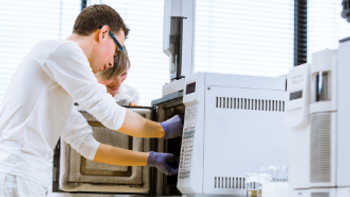
Advances in Gas Chromatography for DHA, PONA and PIANO Analysis in Fuels by Single and Multidimensional GC Techniques
Register today to expand your knowledge of new and unique single- and multi-dimensional GC method for detailed hydrocarbon analysis (DHA), PIONO and PONA analysis. Learn how optimizing the selection of your GC columns can help improve the method run time and sensitivity of your analytical methods, making the GC column selection a less painful proposition. Live: Thursday, Sept. 12, 2019 at 11am EDT | 8am PDT | 4pm BST | 5pm CEST On demand available after airing until Sept. 12, 2020 Register free
Register free:
Event Overview:
Complex samples including petroleum hydrocarbon fractions require detailed separation of individual classes of organic compounds. In this seminar, two approaches will be explored to handle complex petroleum fractions.
In the first approach, single-dimensional GC will be considered for detailed hydrocarbon analysis and ASTM Methods (D5134, D5441, D5501, D6729, D6730, D6733). This approach requires highly efficient GC column dimensions. We will explore how choosing optimal column dimensions can lead to highly efficient separation. Further, we will walk you through column selection for multiple ASTM methods.
In the second approach, GCxGC will be explored using two complementary selectivities. Using a one-dimensional GC approach provides separation of individual group components, whereas the 2D GC approach provides in-depth separation of complex light, heavier hydrocarbons, oxygenates, and FAMES from each other. Due to high peak capacity in GCxGC and the orthogonal selectivity of GC columns used, that provide complementary selectivity in the two dimensions, effective separation of individual component can be achieved. This includes group separation of linear alkanes (n and iso-parafins), linear alkenes (olefins), cyclic alkanes, aromatics (one-ring teralin derivatives), aromatics (one-ring, benzene derivatives), aromatics (2-rings naphtalene derivatives), Aromatics (2-rings, dibenzene derivatives), aromatic (3-rings), aromatic (4-rings), aromatic (5-rings), oxygenates and FAMEs in aviation fuels. Different column combinations including normal and reversed-phase selectivity and different modulation approaches including flow- and cryomodulation were explored, depending on the matrix and the application. End results demonstrated that choosing the most highly efficient column dimensions and choice of column selectivity are the keys to achieve good chromatographic separation.
Key Learning Objectives
- Explore benefits of highly efficient separation for detailed hydrocarbon analysis (DHA)
- Identifying Orthogonal selectivity for 2D GC separation of individual components
- Learn how choosing the right column dimensions can be key to optimizing your hydrocarbon separations, both in 1D and 2D approaches
Speaker: Dr. Ramkumar Dhandapani, Global Product Manager Gas Chromatography, Phenomenex
Time and Date: Thursday, Sept. 12, 2019 at 11am EDT | 8am PDT | 4pm BST | 5pm CEST
On demand available after airing until Sept. 12, 2020
Sponsor: Phenomenex
Register free:
Newsletter
Join the global community of analytical scientists who trust LCGC for insights on the latest techniques, trends, and expert solutions in chromatography.




